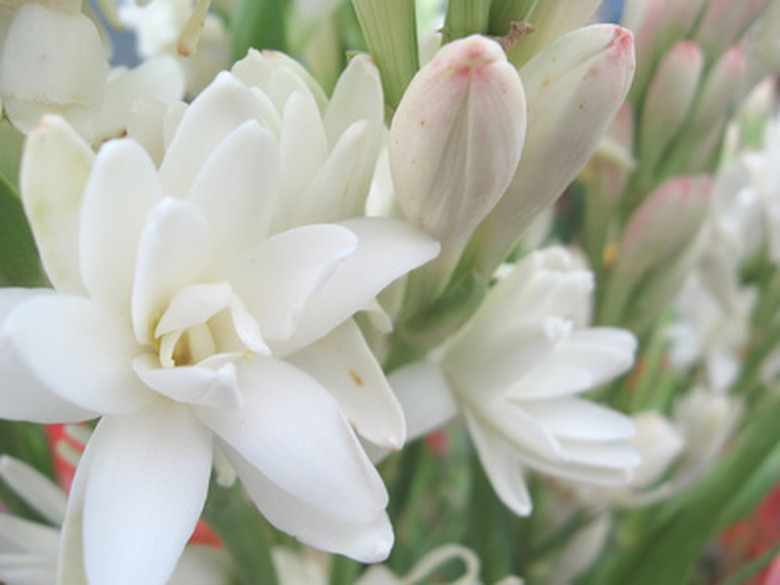What Is The Plant Tuber Rose?
Plant the bulbs of the tube rose (Polianthes tuberosa) in spring and they produce their fragrant white flowers in late summer. In regions with mild winters, such as U.S. Department of Agriculture hardiness zones 7 through 11, the bulbs survive underground and sprout in early spring to begin a long flowering season. This flower was grown and favored by Victorians in the 19th century.
Taxonomy
The tube rose is a member of the agave family, Agavaceae, even though by first look of this plant you may mistake it for a lily. It is one of 13 species of similar perennial plants belonging to the botanical genus (classification group) named Polianthes.
Origins
Tube rose is native to the sandy soils of sunny woodlands in Mexico, although the Missouri Botanical Garden states that it is no longer found growing naturally in the wild. It was most likely cultivated by native peoples in Central American well before Christopher Columbus' initial journey in 1492. This species was among the first plants brought back to Europe from the newly discovered Americas.
- Plant the bulbs of the tube rose (Polianthes tuberosa) in spring and they produce their fragrant white flowers in late summer.
- In regions with mild winters, such as U.S. Department of Agriculture hardiness zones 7 through 11, the bulbs survive underground and sprout in early spring to begin a long flowering season.
Features
Seasonally dormant, tube rose produces it semi-erect green leaves from spring to fall until dry soil or cold knocks back the foliage. These thin, linear to lance-like leaves emerge from the underground bulb and grow about 18 inches tall. In summer, a flower stem rises from the bulb. The stem is topped by a loose cluster of waxy white tubular flowers that emit an intensely sweet aroma. Each flower measures no more than 2 1/2 inch in length atop a flower stem that is 2 to 4 feet tall.
Growing Requirements
Plant the tube rose bulb 6 inches deep in a sandy soil that has moderate fertility and is moist in the warmth of spring and summer months to sustain leaf and flower production. Fertilize during the growing season every two weeks with a balanced liquid fertilizer product, according to the American Horticultural Society's "A-Z Encyclopedia of Garden Plants." Once the foliage naturally begins to yellow and die in autumn, reduce watering and cease fertilization. Allow the bulbs to remain in the soil over the winter, dormant, with no supplemental irrigation other than natural rainfall. If temperatures regularly drop below 5 degrees Fahrenheit in your area, lift the bulbs and store them in a box of sand in a cool, dry but frost-free location indoors.
- Seasonally dormant, tube rose produces it semi-erect green leaves from spring to fall until dry soil or cold knocks back the foliage.
- Plant the tube rose bulb 6 inches deep in a sandy soil that has moderate fertility and is moist in the warmth of spring and summer months to sustain leaf and flower production.
Concerns
While not usually affected by diseases, tube rose plants may become infected with viruses according to the "A-Z Encyclopedia of Garden Plants." Viruses cause unhealthy foliage and deformed or diminished flowering. Such plants should be destroyed. Otherwise, watch for aphids on flower buds, especially if plants are stressed from lack of soil moisture or inadequate light levels.
References
- "A-Z Encyclopedia of Garden Plants"; Christopher Brickell and H. Marc Cathey, eds.; 2004
- Missouri Botanical Garden: Polianthes tuberosa
